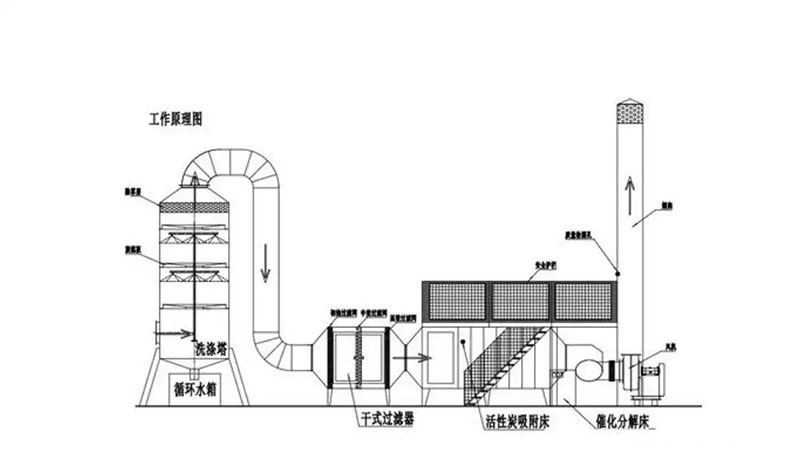Suzhou Weixiang Infrared Technology Co., Ltdding_guilin@126.com
Release time:2022-12-03 Hits:1265
Catalytic combustion equipment, also known as combustion device, is a kind of equipment used to treat waste gas. The equipment is mainly composed of heat exchange equipment, combustion chamber, catalytic reaction equipment, heat recovery system and flue gas emission equipment. The equipment needs the help of catalyst to burn organic waste gas at a lower ignition temperature without generating flame. Now Mingsheng Environmental Protection will introduce the working principle and process of catalytic combustion, which can be divided into the following three types:

1. Preheating
This is a relatively basic process. Since the main principle of the catalyst is that the temperature of the organic waste gas is lower than 100 ℃ and the concentration is low, the heat is usually not self-sufficient in this case, so it needs to be heated before entering the reactor and in the preheating chamber. Generally, the preheating methods used mainly include gas or electric heating. These two methods can heat the exhaust gas to the ignition temperature required by the catalytic reaction, so as to achieve the purpose of combustion, oxidation and decomposition. The gas after combustion and oxidation is in the heat exchanger. It exchanges heat with the untreated waste gas, so it can recover some heat.
2. Self heat balance
The temperature of organic waste gas is high and the content of organic matter is high. Under normal conditions, it is only necessary to ignite the catalytic combustion equipment with electric heater in the combustion chamber, and then recover the heat generated by some pure gas through the exchanger. The advantage of this is that heat balance can be maintained under normal operation without additional heat.
3. Adsorption
This method is mainly used to treat large flow, low concentration and low temperature organic waste gas. This waste gas needs to consume a lot of fuel when it is treated by catalytic combustion. In general, waste gas (such as well-known activated carbon) can be adsorbed onto the adsorbent by adsorption, considering the treatment point of fuel saving. After adsorption, it is concentrated, and then purged with hot air to desorb it into a gas with higher concentration, and then burned and decomposed. This method does not need additional heat supplement and can operate normally.